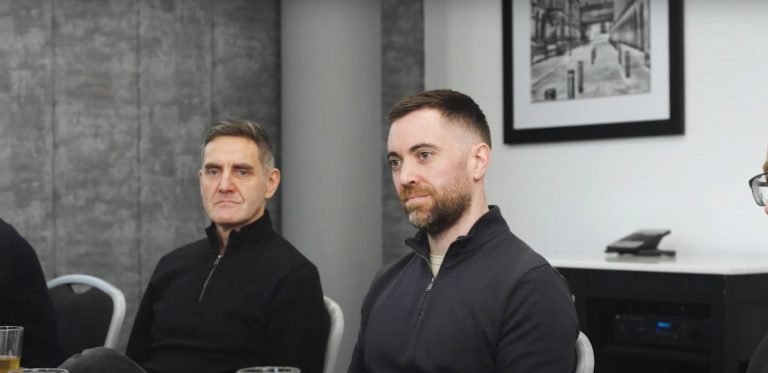News
CERT celebrates UNEP World Environment Day 2022
June 5th marked UNEP World Environment Day. To celebrate, we are diving into how CERT property is taking action to build a better future.
At CERT, we believe that the property and construction industries play a crucial role in shaping the environment. We understand that we directly impact the lives of the people living and working in our buildings, now and in the future. That’s why we are dedicated to delivering inspiring, progressive environments and facilitating communities that will shape future generations.
In this feature, we look at the importance of World Environment Day and showcase how our forward-thinking team strives to generate better outcomes for communities and investors alike.
What is World Environment Day?
Established by the United Nations Environment Programme (UNEP) in 1973, World Environment Day is a global movement that raises awareness about environmental issues to motivate global policy changes by encouraging action.
Each year has a different theme, and for this year’s World Environment Day, which took place on June 5th 2022, the theme is “Only One Earth”.
CERT property celebrates World Environment Day
To embrace World Environment Day 2022, we look at how our approach to property development has positively impacted the communities we work in and highlight our actions to ensure we remain at the forefront of positive changes.
Delivering housing of the future
The ‘Only One Earth’ message has never been more pertinent, we, as a global average, currently use resources at a rate that would require 1.75 Earths in order to be sustainable. This calculation has given rise to the term Earth Overshoot Day, which for this year is 28th July – on that day we have used all of the resources the world can sustainably provide for itself for the entire year. In the UK alone that date rolls back to 19th May. Clearly in this country we are using resources at a rate far in excess of the global average, and further again over sustainable levels of consumption. Construction in Europe accounts for around 31% of the total consumption, so as developers we have a fundamental duty to address this imbalance.
We believe that in order to deliver successful sustainable developments a holistic approach to the design, procurement and delivery of buildings is essential. Sustainable design should be considered from the outset and consumption of resources is just one such consideration; conservation of energy, circular building practices and minimising pollution, including carbon emissions should also all be accounted for. We’re conscious that the tag ‘sustainable design’ can come with negative connotations, either poorer quality, more expensive or takes longer to deliver; however, we’re keen to assert that environmentally conscious design should not hurt in order to do good, we believe that when considered holistically, sustainable design has the ability to make every aspect of a development better; better for the community and better for our stakeholders.
Our sustainable design journey starts when we identify a site – it should be somewhere people want to live, of course, but also be close to public transport, cycling infrastructure and local amenities so as to reduce car usage. In Old Trafford and Stretford, we purposefully chose the sites for residential projects Kinetic, Insignia and Royal Canal Works due to their proximity to growing town centres and the Metrolink tram network.
Initiatives such as the Architect Journal’s Retrofirst have shone a light on the importance of reusing and repurposing existing buildings in reducing consumption, there’s no better way to reduce embodied carbon than to reuse a building that’s already there. At CERT we strive to do just this, at Kinetic, a development of 62 apartments, we converted the concrete framed office building and extended upwards in lightweight steel, we’re currently working to calculate the carbon saving over demolition and rebuild. At SONA, (a stalled residential project which we stepped in to complete) rather than demolish the water damaged timber frame, which would have saved money, we grafted out the damaged wood and replaced, taking a more considered approach and therefore reducing consumption of materials.
At our own home, Hilton House, the 1960s concrete frame was exposed and celebrated with a new facade which allows more natural light into the workspace while reducing heat loss, again saving the carbon cost of demolition and reconstruction. The result is a building turned from an eyesore to a landmark within the community, the renovation has secured the building for another 60 years.
When we do build from new, we strive to utilise brownfield sites as they tend to be in sustainable locations and cause least harm to the local ecology. Building from scratch, we have the chance to sequester carbon, rather than produce it, so where possible we seek to use timber and recycled materials. Through cherry picking the best of existing design concepts, building methods and materials, and applying new technology we can lead the way towards low energy, zero carbon and zero waste communities. An example of this is the development of our own offsite construction system for housing, a concept designed to be adaptable to new low carbon and carbon negative materials and practices as they’re developed in future. The houses will be designed with a fabric first approach, with high levels of natural insulation, high airtightness and oriented on site to take advantage of natural light and heat gains. Being produced off-site minimises waste and improves quality control as well as having the capacity to reduce travel miles. We think construction is at the beginning of a low-carbon revolution with many exciting new technologies coming to market, we believe our role is to give breakthrough construction tech a platform on which to be tested and implemented.
As a full-service developer, we manage many of the buildings we create, community facilitation is key, and through our active and engaging management team, we keep an ear to the ground about what more we can do for our communities. Our responsibility to sustainable design doesn’t end when the building is complete, we listen to our residents and tenants and implement changes. One example is the reduction of waste in buildings. We’re implementing waste reduction strategies across all of our developments, making it easier for people to recycle, reuse and lead a low waste lifestyle, an end to the quick dash into a smelly bin store.
Net-zero carbon in our projects by 2040
To mark our commitment to sustainable design, we are committed to achieving net-zero carbon in our projects by 2040 – 10 years earlier than government targets. Our goal is to minimise the embodied carbon footprint and in-use carbon footprint across all projects by using natural renewable materials and renewable energy sources to heat, cool, and power buildings.
In addition to reusing and repurposing existing structures we strive to utilise local supply chains and employ local tradespeople to minimise the travel distance of materials and those working at our sites. Our team is passionate about reaching this goal which means that in each building, we learn, become more efficient and strive to find better ways to reduce our environmental impact and embody the “Only One Earth” campaign.
Click here to learn more about our impact and why we do what we do.
How to get involved in World Environment Day
For more information about how the CERT property team is celebrating World Environment Day, follow us on Instagram, Twitter, LinkedIn, or Facebook, where we post regular updates about the topics we are passionate about.
More News





